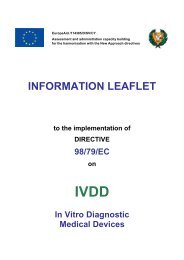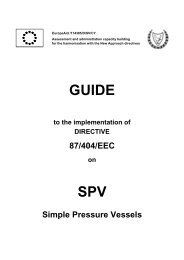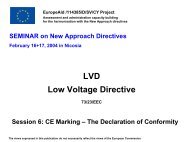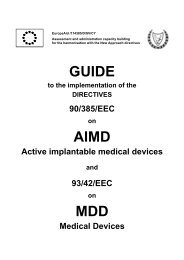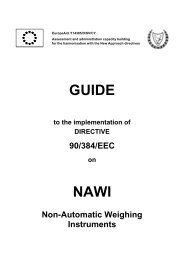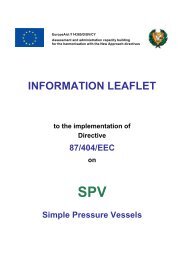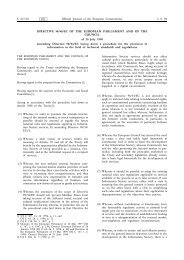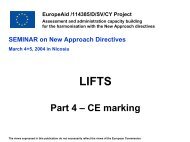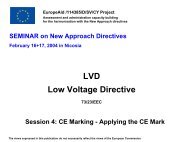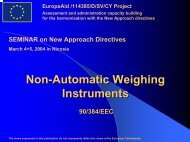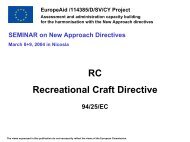Atex guidelines
Atex guidelines
Atex guidelines
Create successful ePaper yourself
Turn your PDF publications into a flip-book with our unique Google optimized e-Paper software.
-5-1. INTRODUCTION1.1 General commentsThe objective of these <strong>guidelines</strong> is to clarify certain matters and procedures referred to in directive94/9/EC 4 concerning equipment and protective systems intended for use in potentially explosiveatmospheres. The <strong>guidelines</strong> should be used in conjunction with the directive and with the EuropeanCommission’s ”Guide to the implementation of directives based on New Approach and GlobalApproach (Blue Guide)”.These <strong>guidelines</strong> are aimed not only at the Member States’ competent authorities, but also at the maineconomic operators concerned, such as manufacturers, their trade associations, the bodies in chargeof the preparation of standards and those entrusted with the conformity assessment procedures.First and foremost, this document must ensure that, when correctly applied, the directive leads to theremoval of obstacles and difficulties related to the free circulation (free movement) of goods withinthe European Union (see footnote 2), which any of the groups concerned may encounter as regardsthe aspects relating to the presence of potentially explosive atmospheres. It should be noted that thestatements in these <strong>guidelines</strong> refer only to the application of directive 94/9/EC unless indicatedotherwise. All parties concerned should be aware of other requirements, which may also apply (seechapter 6).The directive 94/9/EC is a “New Approach” directive laying down Essential Health and SafetyRequirements and leaving it to standards, primarily European harmonised standards, to give technicalexpression of the relevant requirements contained in the directive.Directive 94/9/EC is a total harmonisation directive, i.e. its provisions will replace existing divergentnational and European legislation which cover the same subjects as now stipulated by directive94/9/EC.Directive 94/9/EC had to be transposed into national law by 1 September 1995. Its provisions haveapplied (on a voluntary basis only) since 1 March 1996.However, the broad scope of directive 94/9/EC demonstrated the overriding need to provide for atransitional period, so as to ensure a smooth changeover to a New Approach Community-widesystem.1.2 Transitional periodThe Council adopted directive 94/9/EC with a view to allowing a transitional period until 30 June2003.During this transitional period until 30 June 2003, a manufacturer has the choice of placing on themarket and/or putting into service:i. products manufactured in accordance with the directive 94/9/EC, whereby the free movementof the products is guaranteed pursuant to the directive; or,ii.products manufactured in accordance with national regulations in force in their territory at thedate of adoption of this directive (i.e. 23 March 1994), whereby free movement of apparatus isguaranteed pursuant to Article 28 of the EC Treaty, albeit subject to the possible derogationprovided for in Article 30;or,4OJ L 100, 19.4.1994



